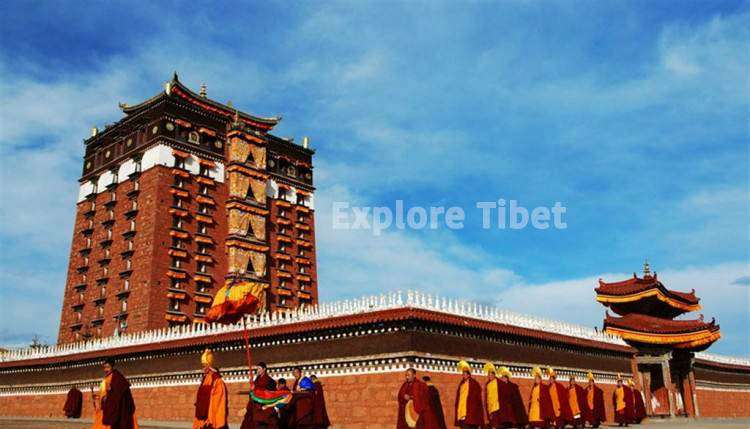
Tibet has a large number of monasteries of different size and sect due to the huge follower of the Buddhism. One of them is the Labrang Monastery; Labrang is recognised as the cultural heart of Amdo Tibetan culture along with the nearby town of Rebkong. Labrang lies at an elevation of 2950 meters in a valley that is partially surrounded by evergreen forest. Labrang monastery is located in Xiahe County, known in Tibetan as Sang chu. The town lays alone the Sang Chu river, which is a tributary of the yellow river. The town of Xiahe is approximately 50% of Tibetan with the remaining 50% being mostly Han Chinese and Hui Muslims. The eastern part of the city is predominantly Chinese and is well developed. Labrang monastery lies in the middle of the town. The western part of town is nearly all Tibetans, many of whom live in small, traditional lifestyle of Tibetan homes. Labrang monastery is one of the six great monasteries of the Gelug school of Tibetan Buddhism. Its formal name is Genden Shedrup Darge Tashi Gyesu Kyilwe Ling.
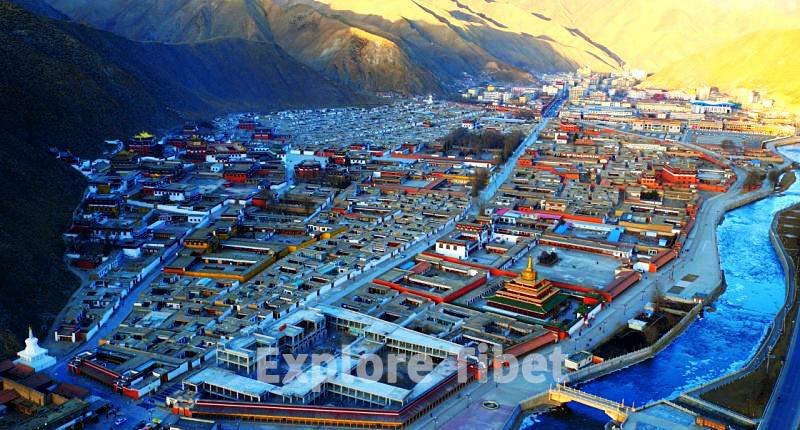
Labrang monastery was founded in 1709 during the Qing dynasty era, exactly 300 years after Gaden monastery built in Lhasa. Due to the location, Labrang monastery became the focal point of conflict between the Tibetan, Muslims, Chinese and Mongolians. During the Cultural Revolution part of it was destroyed. Monastery covering an area of 866 hectares (about 2,140 acres), the monastery contains tens of thousands of rooms that painted red, yellow and white according to the function and class. They all look imposing and majestic.
The architectural layout of the Labrang Monastery is presented in typical Tibetan traditional style. The symbols of the whole construction are the white stupas in the northeast and northwest. There is Wensi College, an Exoteric Buddhist college and five Esoteric Buddhist colleges in the monastery. Wensi College is the centre of the monastery, also known as Grand Sutra Hall. Buddha halls are located in the north-western part of the Grand Sutra Hall. Other halls are spread out in a shape similar to a crescent moon and richly decorated with ornaments.
The Grand Sutra Hall is the dominant place for the religious activities of the Labrang monastery and for adherents worshipping. On the wall, there are portraits and shrines of Buddha and bookcases. The Buddha statues in the temple are all like lifelike with gentle and kind expression. Various butter sculptures are also displayed. The temple walls are decorated with colourful and elaborated paintings of the thangka.
One thing very unique and special about the Labrang Monastery is having the longest corridor of prayer wheels all over the world, with over 1,700 scriptures wheels. The hexagonal wood cylinders are carved with different scriptures, stretching as long as 2.2 miles. Walking to the end of the corridor takes more than an hour. Today Labrang monastery has almost 1600 to 1800 monks and nuns.
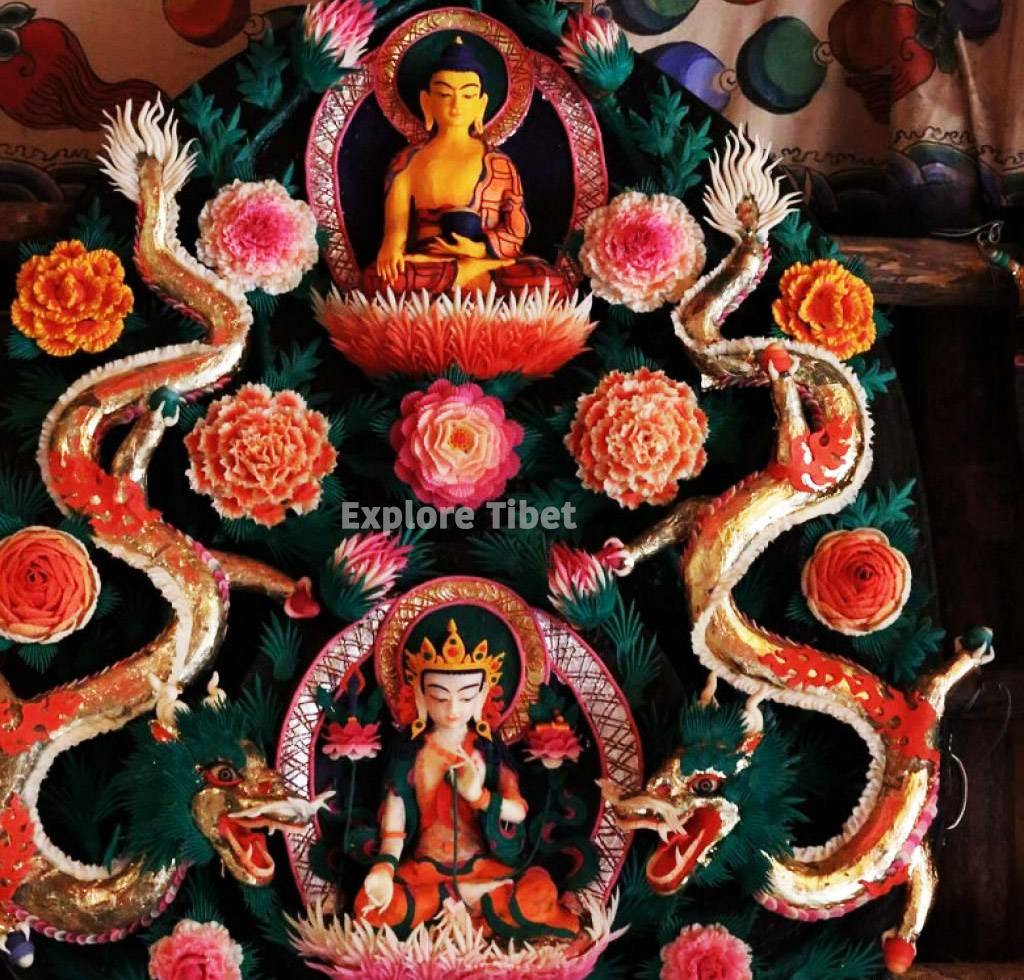
So Labrang monastery is an important pilgrimage destination for Tibetan living across the Amdo region. Though religious pilgrims come through the years, the most popular time pilgrims arrive in Labrang is the weeks before the Losar or Tibetan New Year. Large festivals take place in Labrang during Losar each year. The Monlam prayer festival holds in many Tibetan monasteries across the Tibet plateau. But the Labrang monastery Monlam Chenmo is one of the most popular ones in Tibet.
The Monlam Chenmo, also known as the Great Prayer Festival is the most important Tibetan Buddhist celebration of the year. It falls on the 4th to 11th day of the 1st Tibetan Lunar month. Monlam means “wish-path”, the Buddhist path of helping others through the prayers. The Monlam Chenmo commemorates the Buddha’s enlightenment or fully awakening from ignorance. All the prayers are being sent to sentient beings in six realms (human realm, animal realm, hungry ghost realm, hell realm, demi-god realm and god realm.)
Monlam Chenmo was established in 1409 by Lama Tsongkhapa, the great philosopher and founder of the Gelug tradition of Tibetan Buddhism. The first festival was held in Jokhang in Lhasa. As the greatest religious festivals in Tibet, thousands of monks, (of the three main monasteries of Drepung, Sera and Gaden) gathered for chanting prayers and performing religious rituals at the Jokhang Temple in Lhasa.
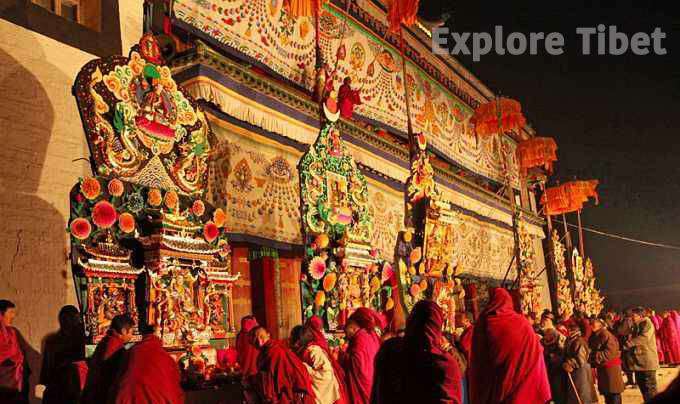
Labrang monastery celebrates the one of the most popular Monlam as called as Labrang Monlam Chemo. On that day thousands of monks gathered together for chanting prayers and performing religious rituals. On that day examination for the highest Lharampa Geshe degree (a degree in Buddhist philosophy in the Geluk tradition) were held during the weeklong festival. Monks would perform traditional Tibetan Buddhist dances (cham) and huge ritual offering cakes (tormas) were made, that were adorned with very elaborate butter sculptures, on the fifteenth day the highlight of Monlam Chenmo would be the “Butter Lamp Festival”. In the early time in Lhasa, Bakor square in front of the Jokhang would be turned into a grand exhibition site for the huge tormas. At the end of the festival, these tormas would be burned in a large bonfire.
On Labrang Monlam Chenmo, Labrang monastery unfolds huge religious scroll-paintings (thangka) for all the pilgrims and they seek the blessing and pray with for happiness and joy. Seeing Buddha image on the thangka scroll on the hill or on the wall is a plants seed of Enlightenment in viewers mindstream. It is believed that merits collected from producing Buddha’s images are a huge blessing if the viewers keep in mind for so long. So the bigger the better and this accounts for the large Buddha tapestry used during the Monlam festival. Monks and Lama were praying while the Thangkha were displaying on the mountain.
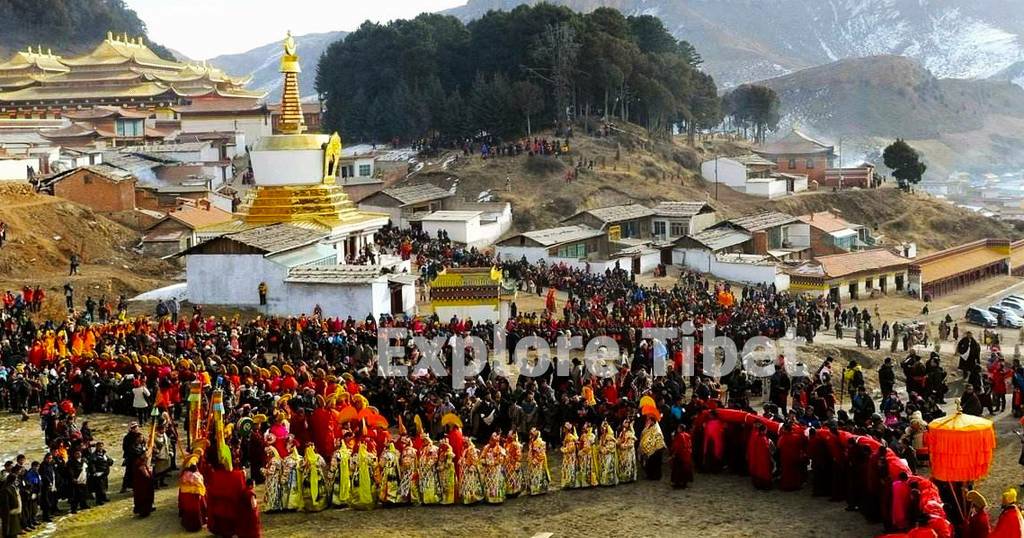
So during the Monlam Festival, Buddhist pray, rejoice, make offerings and to commemorate the miracles Buddha performed about 2500 years ago and the goal is remembering the Buddha and his virtuous activities. Also, many pilgrims from all over the Tibetan autonomous region join the Monlam prayers and teaching and make the donations to the monks and nuns. The unfolding of thangka is to bless all the pilgrims and the surrounding land. It is indeed a great sight and very auspicious too that this tradition of the Monlam festival continues to grow and preserved through all the generation and celebrate with so much joy.
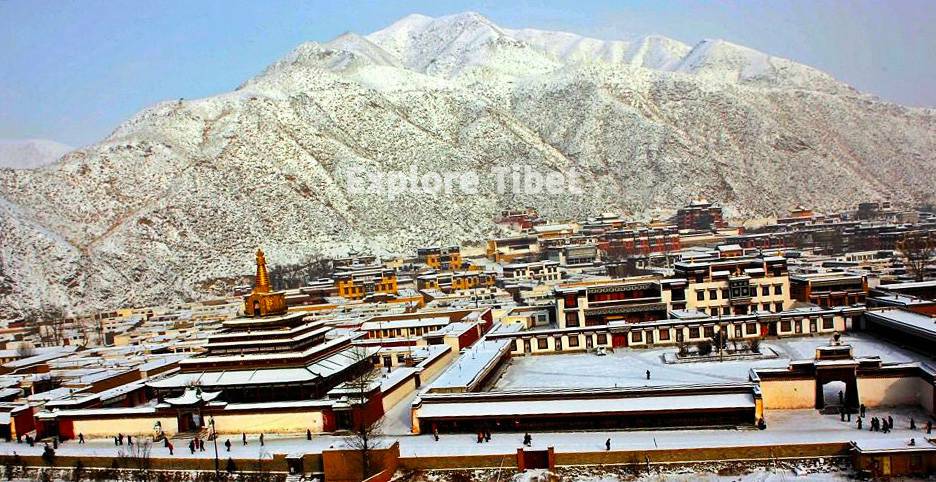
If you want to know more about Labrang Monlam Chenmo, please feel free to write us at [email protected].
